ICT Network Management Training Programme: Techio Comunitario
Techio Comunitario is a training programme for the management of ICT networks, aimed at people from indigenous and rural communities in Latin America. In addition to providing technical knowledge for the installation, operation and maintenance of communication projects, it seeks to generate a network of people who accompany each other to strengthen the path towards technological autonomy in their territories.
This programme is the result of a collective effort by organisations linked to community and indigenous communication and the International Telecommunications Union (ITU), and is based on an active process of reflection on the technologies, training and lifestyles of the communities it is aimed at.
So far, it has two face-to-face editions in Mexico (held between 2016 and 2019) and four Latin American editions, held in hybrid format between 2020 and 2023, in which more than 200 people from 14 countries in the region have participated.
The topics included in the programme have a technical dimension, such as basic electricity and electronics, the use of free software or the functioning of Internet networks, but also include social, economic and political elements, such as the critical analysis of technologies and their selection, the legal framework of telecommunications or the sustainability of community communication projects.
Below you can consult the contents of the course.
More information about the program and upcoming calls: techiocomunitario.org



Course 1: ICT Project Development in Community Contexts
The overall objective of the course is to understand the important elements in the design and implementation of community communication strategies, through the critical analysis of ICTs and the selection of technologies relevant to the development objectives, dreams, desires and needs of the communities where they are developed.
Resources:
- Wâhkômâkanak: The Network that Sustains Life
- Rethinking Technologies for Communication: Methodological Proposals for Designing and Implementing Community Communication Projects
- Knowledge and Communalism by Jaime Martínez Luna
- Youths of El Carmen de Bolívar: Scriptwriters, Directors, and Stars of Their Own Films
- First Edition of the Community Networks Seedbed of Abya Yala
- Community Media and COVID-19: The Case of Radio Tosepan Limaxtum in the Sierra Norte de Puebla
- Indigenous Communication as Public Policy in Colombia by Martín Vidal
- In the Aquarium of Facebook
- With the Web and Mobile, the Difference Between Work Time and Life Time is Disappearing
- Revisiting Iván Illich: Conviviality, Technologies, Institutions on Lablog
- Letter to Aunt Ofelia: Seven Proposals for Equitable Development with the Use of New Information and Communication Technologies
- Selecting Sustainable ICT Solutions for Pro-Poor Intervention
Course 2: Basic Electricity and Electronics for Telecommunications
The objective is to reflect on the evolution of the concept of energy, especially in relation to its commodification and privatisation. We invite you to watch the documentary “La energía de los pueblos” to get a clearer perspective and, if you have more time, to go deeper with additional materials to enrich your reflection.
Resources:
- Lights of Resistance Campaign
- The Spiral of Energy Podcast
- Local, Communal and Non-State: An Introduction to the Debate on the Possibilities of Community Energy Management
Actividad 1. Algunas reflexiones en torno a la energía
Reflexionar sobre la matriz energética actual y las perspectivas sobre una transición hacia un modelo energético alternativo.
Material Básico
Actividad 2. Estado de la red eléctrica y censo de cargas
Identificar las condiciones de la red eléctrica externa e interna de un inmueble y cómo por medio de un censo la energía consumida durante un día en el inmueble.
Material de apoyo
Actividad 3: Primeros ejercicios
El objetivo es entender el concepto de potencia, reflexionar sobre las nociones de corriente y voltaje, y adquirir una clara comprensión del consumo eléctrico.
Material de apoyo
- Documento “Y se hizo la luz”
- Video “ley de Watt”
- Video “ley de Ohm”
- Presentación: Primeros pasos eléctricos
- Normativa de Instalaciones Eléctricas México 2018
- Guía Internacional de Instalaciones Eléctricas
Actividad 4: Cuadro de cargas
Introducir el tema de la energía solar fotovoltaica con una perspectiva comunitaria.
Material Básico
- Video ejemplo de uso de herramienta de “Cuadro de cargas”
- Video “Cómo balancear un cuadro de cargas…”
- Presentación: Suministro de energía
- Documento: Salio el Sol
- Video: “Cómo funcionan las celdas solares”
Actividad 5: Evaluación de habilidades
Como personas encargadas de los asuntos técnicos de las TIC en nuestra comunidad, es importante tener las bases lógico-matemáticas para poder resolver de la mejor manera los problemas relacionados a las condiciones de la red eléctrica y de esa manera poder operar de forma óptima.
Material Básico
Course 3: Telecommunications and Community Networks
The objective is to understand how the internet and telecommunications networks work, through the three layers that compose them: physical, logical, and economic and social; in order to know the necessary elements for the design of a model of connectivity that responds to community life within the territory of the participants of the course.
Resources:
- The Structure of Telecommunication Networks
- A Journey to the Bottom of the Internet
- Community Network – QUILOMBO RIBEIRÃO GRANDE TERRA SECA
- Radio Spectrum and Electromagnetic Spectrum
- Wireless Networks in Developing Countries Chapter 4
- The Social Ownership of Content
- What are Networks and How Does the Internet Work?
- LibreRouter: Mesh Technology Alongside Community Networks
- Computers and LAN Networks
- How Does DNS Work?
- Learning Guide for Building Networks
- What is an IP Address? (video in English)
- Wireless Networks in Developing Countries
- Free, Community, and Decentralized Networks
- Planning a Free and Community Network
- Participatory Mapping of a Free and Community Network
- Illustrated Journey of Women through Community Networks
Actividad 1. Introducción a las telecomunicaciones y a las redes comunitarias.
Las telecomunicaciones son parte de nuestra vida diaria. Desde conectarnos a Internet, ver la televisión, escuchar la radio, mandar SMS o hacer llamadas. Durante esta primera tarea, el objetivo es encontrar cómo las telecomunicaciones se relacionan o se entienden en nuestra cotidianidad y cómo podríamos entenderlas colectivamente desde analogías que resuenen en nuestros territorios. La idea de esta tarea es que las y los participantes puedan compartirnos de qué manera utilizan las telecomunicaciones con su día a día.
Material Básico
- La estructura de redes de telecomunicaciones (Capítulos 2 al 5)
- Ejemplo despliegue cables submarinos: A Journey to the bottom of the Internet
Ejemplo red comunitaria fase inicial: Rede Comunitária – QUILOMBO RIBEIRÃO GRANDE TERRA SECA
Actividad 2. Capa Física: tipos de redes, equipos y espectro radioeléctrico
El objetivo es adquirir un entendimiento claro de la capa física de las telecomunicaciones, comprendiendo el espectro radioeléctrico, las técnicas de modulación de ondas y el uso y función de equipos esenciales como radios, antenas y diversos tipos de cables.
Material Básico
- Lectura sobre Espectro del Curso de telecomunicaciones para no técnicos
- Espectro radioeléctrico y espectro electromagnético
- Redes Inalámbricas en los países en desarrollo Capítulo 4
- Lopez Vigil, Igancio (2007) La propiedad social de los contenidos.
Actividad 3. Capa lógica: Cómo se organizan las redes
Conocer cómo se organizan las redes de telecomunicaciones a través de las distintas topologías de red, protocolos, cómo se comunican los dispositivos, software libres o propietarios y servidores locales.
Material Básico
Actividad 4. Capa social y económica: Experiencias alternativas de conectividad
Conocer y dialogar con algunas experiencias de modelos alternativos de conectividad desplegados desde procesos comunitarios en distintos territorios de la región. Consideraremos cuestiones relacionadas a género, raza/etnicidad y territorios para el diseño de una red comunitaria desde lo local.
Material Básico
- Redes Inalámbricas en Países de Desarrollo
- Redes libres, comunitarias y descentralizadas
- Planificación de una red libre y comunitaria
- Mapeo participativo de una red libre y comunitaria
- Viaje ilustrado de mujeres por las redes comunitarias
Course 4: Regulatory Environment of Telecommunications and Broadcasting
The objective is to learn the basic elements of telecommunications regulation and related aspects, as well as the fundamental rights of Indigenous Peoples in this area, in order to understand the logic followed in the provision of telecommunications services and the administration of the spectrum.
Resources:
- Video Indigenous Peoples and the Community Management of Water
- Thinking from the Commons
- United Nations Declaration on the Rights of Indigenous Peoples
- ILO Convention 169
- Guide to Communication and Rights
- The Street Network
- Video: Weavers of Technology
- Infographic on Hegemonic Masculinity
- Community Networks in Latin America: Challenges, Regulations, and Solutions
- Indigenous Peoples Maya Kaqchikel of Sumpango and others Vs. Guatemala
- The Right to Appear on TV
- Good Practices in Cinema: How to Make Documentary Films Without Extractivist Practices?
- Mariana Fossati: From Copy Right to Copy Left, the Culture of Collaboration
- Creative Commons License Generator
- Wireless Internet Service Providers
Course 5: Economic Sustainability and Community Project Management Models
The objective is to generate skills and provide methodological tools to understand the management of a community communication project, focusing on capacity building for the creation of sustainability strategies for the initiatives developed by the participants.

